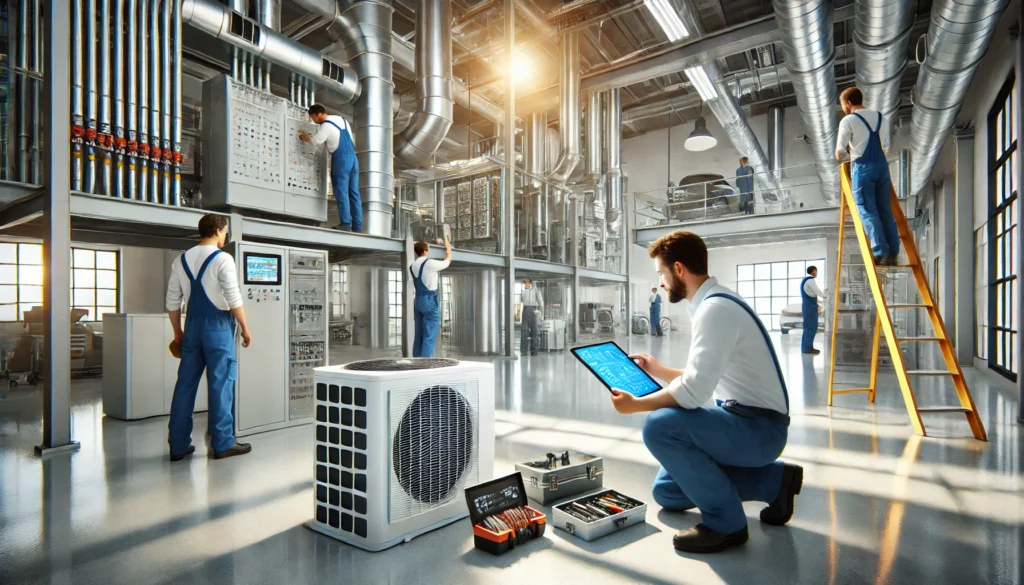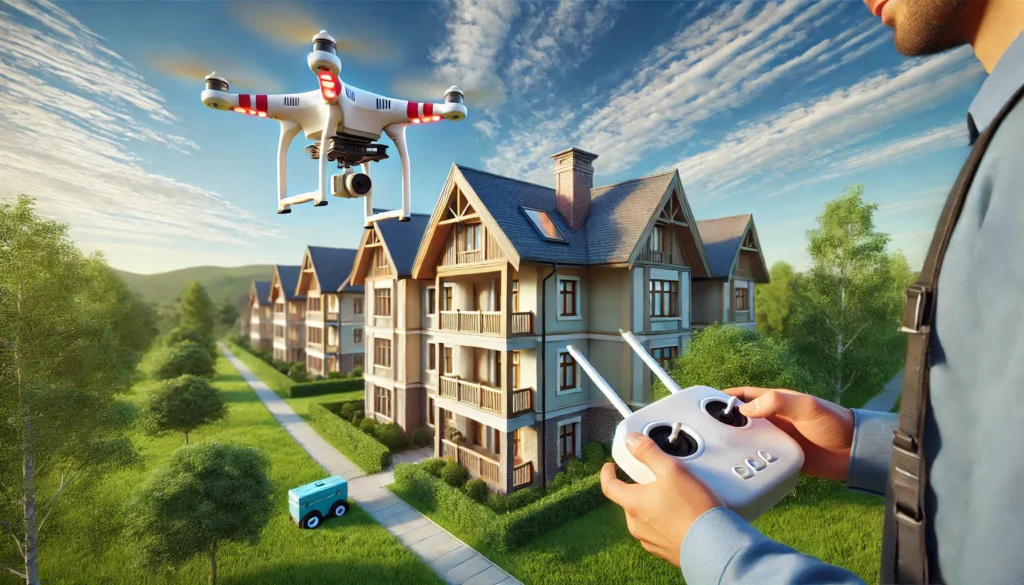Maintaining a building, whether commercial or residential, is essential for ensuring safety, functionality, and longevity. A well-maintained property not only preserves its value but also provides a comfortable environment for occupants. This comprehensive guide offers expert advice on building maintenance, incorporating international guidelines and best practices to help you effectively manage your property.
Importance of Building Maintenance
Regular building maintenance is crucial for several reasons:
- Safety: Ensures that all building systems operate safely, reducing the risk of accidents.
- Functionality: Maintains the proper functioning of building systems, preventing disruptions.
- Cost Efficiency: Prevents minor issues from escalating into major, costly repairs.
- Compliance: Adheres to local and international building codes and standards.
- Asset Value: Preserves and potentially increases the property’s market value.
Key Components of Building Maintenance
Effective building maintenance encompasses various components:
1. Structural Maintenance
- Inspections: Regularly assess the integrity of foundations, walls, roofs, and other structural elements.
- Repairs: Address cracks, leaks, or damages promptly to prevent further deterioration.
2. Electrical Systems
- Safety Checks: Conduct routine inspections of wiring, outlets, and electrical panels to prevent hazards.
- Upgrades: Replace outdated systems to meet current safety standards and improve efficiency.
3. Plumbing Systems
- Leak Detection: Monitor for leaks or blockages to prevent water damage and mold growth.
- Maintenance: Ensure proper functioning of pipes, faucets, and drainage systems.
4. HVAC Systems
- Regular Servicing: Maintain heating, ventilation, and air conditioning systems for optimal performance.
- Filter Replacement: Change filters periodically to ensure air quality and system efficiency.
5. Fire Safety Systems
- Equipment Checks: Test alarms, extinguishers, and sprinkler systems to ensure readiness.
- Compliance: Ensure all fire safety equipment meets local regulations and standards.
6. Exterior Maintenance
- Facade Care: Maintain the building’s exterior, including cleaning and repairing surfaces.
- Landscaping: Keep outdoor areas well-maintained to enhance aesthetic appeal and safety.
International Guidelines and Standards
Adhering to international standards ensures that building maintenance practices are effective and globally recognized. Key standards include:
1. ISO 41001:2018 – Facility Management
This standard provides a framework for effective facility management, ensuring that maintenance practices align with organizational objectives.
2. ISO 55001:2014 – Asset Management
Focuses on the management of assets, including buildings, to achieve value through effective maintenance strategies.
3. International Building Code (IBC)
Provides minimum safety standards for building construction and maintenance, ensuring structural integrity and safety.
Best Practices in Building Maintenance
Implementing best practices enhances the efficiency and effectiveness of maintenance activities:
1. Develop a Preventive Maintenance Plan
Schedule regular inspections and maintenance tasks to prevent issues before they arise. Utilize maintenance checklists to ensure all areas are covered.
2. Utilize Maintenance Management Software
Employ Computerized Maintenance Management Systems (CMMS) to track maintenance activities, schedule tasks, and manage work orders efficiently.
3. Train Maintenance Personnel
Ensure that maintenance staff are well-trained and knowledgeable about the latest maintenance techniques and safety protocols.
4. Conduct Regular Audits
Perform periodic audits to assess the effectiveness of maintenance practices and identify areas for improvement.
5. Implement Energy-Efficient Practices
Adopt energy-saving measures, such as using LED lighting and energy-efficient HVAC systems, to reduce operational costs.

Building Maintenance Checklist
A comprehensive maintenance checklist ensures that all aspects of the building are addressed:
| Task | Frequency | Details |
|---|---|---|
| Inspect structural elements | Quarterly | Check for cracks, leaks, and signs of deterioration. |
| Test electrical systems | Monthly | Ensure all wiring and outlets are functioning properly. |
| Service HVAC systems | Biannually | Clean filters and check for efficient operation. |
| Check plumbing for leaks | Monthly | Inspect all pipes and fixtures for signs of leaks or blockages. |
| Test fire safety equipment | Monthly | Ensure alarms, extinguishers, and sprinklers are operational. |
| Maintain exterior and landscape | Monthly | Clean facades, repair damages, and upkeep landscaping. |
Challenges in Building Maintenance
Building maintenance can present several challenges:
- Aging Infrastructure: Older buildings may require more frequent repairs and updates to meet current standards.
- Budget Constraints: Allocating sufficient funds for maintenance can be challenging, especially for large properties.
- Regulatory Compliance: Keeping up with changing regulations and ensuring compliance requires continuous attention.
- Technological Advancements: Integrating new technologies into existing systems can be complex and may require specialized knowledge.
Leveraging Technology in Building Maintenance
Advancements in technology have revolutionized building maintenance practices:
1. Internet of Things (IoT)
IoT devices can monitor building systems in real-time, providing data that helps in predictive maintenance and early issue detection.
2. Building Information Modeling (BIM)
BIM allows for the creation of digital representations of buildings, aiding in maintenance planning and management.
3. Drones for Inspections
Drones can access hard-to-reach areas, such as roofs and tall facades, making inspections safer and more efficient.
Conclusion
Building maintenance is a crucial aspect of property management, ensuring safety, functionality, and longevity for both commercial and residential buildings. By adhering to international standards, leveraging modern technology, and implementing proactive maintenance strategies, property owners and managers can minimize risks, reduce costs, and enhance occupant satisfaction. A comprehensive approach that includes preventive maintenance, trained personnel, and effective use of resources is key to preserving the value and usability of any building.
Partnering with trusted professionals like Pro Inspect Solution can provide expert insights and tailored services to meet your maintenance needs. By staying diligent and adopting best practices, you can ensure your property remains a safe, efficient, and valuable asset for years to come.
FAQ
1. What is the difference between preventive and reactive maintenance?
Preventive maintenance involves scheduled checks and upkeep to prevent problems, while reactive maintenance addresses issues after they occur.
2. How often should a building undergo maintenance?
Key systems like HVAC, plumbing, and fire safety should be inspected at least annually, while general building inspections should occur quarterly or semiannually.
3. What are the benefits of using maintenance software?
Maintenance software helps streamline scheduling, track tasks, manage work orders, and provide data insights for better decision-making.
4. Are there specific international standards for building maintenance?
Yes, standards like ISO 41001 for facility management, ISO 55001 for asset management, and the International Building Code (IBC) provide guidelines for effective and compliant maintenance practices.
5. Why is fire safety maintenance important?
Regular maintenance of fire safety systems ensures they are operational during emergencies, protecting lives, property, and compliance with regulations.
6. How can energy-efficient practices benefit building maintenance?
Energy-efficient upgrades, such as LED lighting and modern HVAC systems, reduce operational costs and environmental impact, while also improving system longevity.
7. How do I know if my building complies with local regulations?
Regular inspections by professionals, like those at Pro Inspect Solution, can help identify compliance issues and recommend necessary upgrades.
8. What role does technology play in modern building maintenance?
Technologies like IoT sensors, drones, and Building Information Modeling (BIM) enhance efficiency, predict potential failures, and improve the overall management of maintenance tasks.


